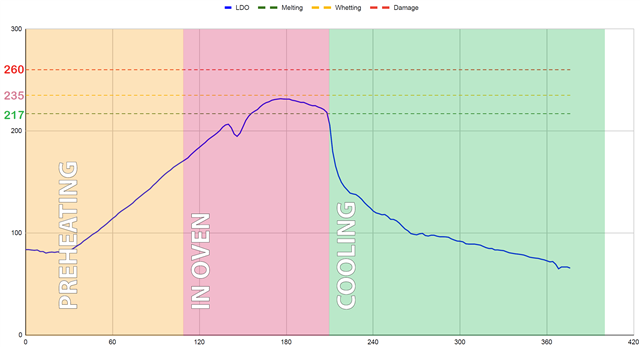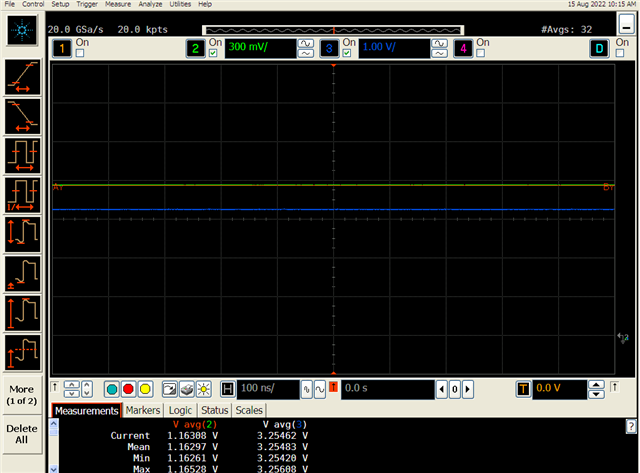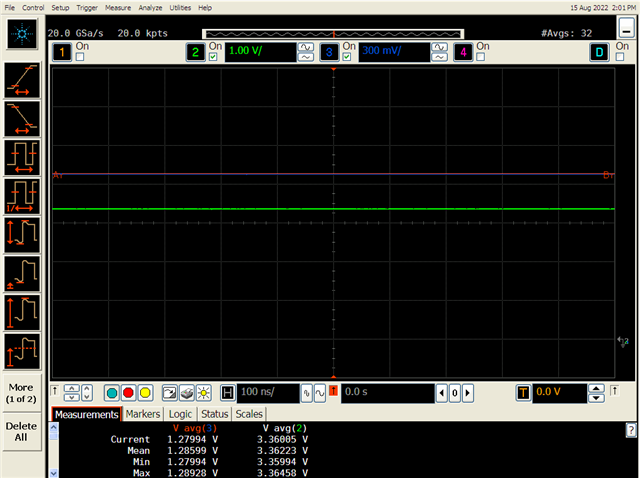Other Parts Discussed in Thread: ADS54J66
We have been searching and waiting for available components to complete our project and found demonstration boards with the desired TPS7A8300RGW package. We noticed that once installed on our boards, these regulators no longer provided stable output and are highly sensitive to temperature. We never experienced this issue while using the 3.5mm package TPS7A8300RGR. Those smaller chips were routinely removed, swapped and returned to function during our development phase. Only when we switched to the larger *RGW package have we experienced any issues with performance. The demonstration boards function extremely well and exhibit no temperature sensitive behavior. Once the chips are removed, they suffer in performance.
We did a series of experiements, including thermocouple measurements during removal and installation, removal and immediate re-installation on the same demo board and even wiring and testing VIN, ENABLE, and VOUT (with decoupling capacitors) while the chip was unmounted and loose.
During all our Pb-Free soldering processes, the temperature never exceeded 260'C. This complies with warnings and optimal profile found in the QFN attachment application note SLUA271B Our installation profile looked like this

In all cases, the LDO mounted to the demonstration boards worked well while any other mounting was sensitive to temperature increase. Specifically, blowing on the chip causes VOUT to rise, settling back to the specified VOUT voltage (1.15 in our case).
We're stuck trying to understand what could be harming these devices, and why they function well on the demo boards but fail as soon as the solder reflow occurs.
Demo board before reflow: (Blue : 3v3 VIN, Green : 1v15 VOUT)

Demo board after reflow: ( Blue : 1v15 VOUT, Green : 3v3 VIN...swapped leads )




